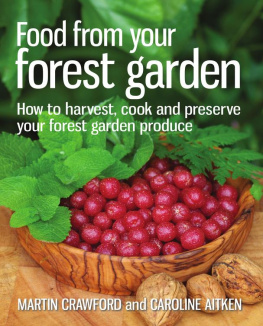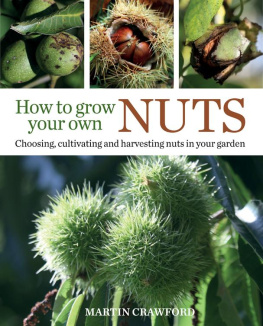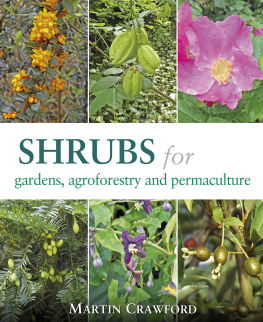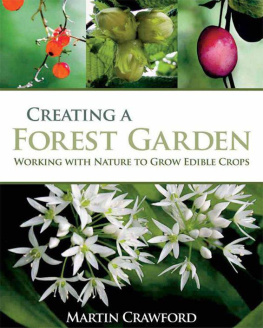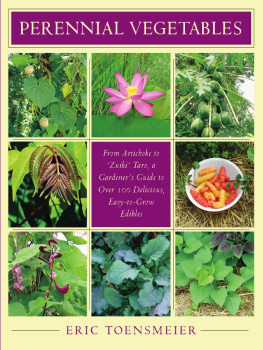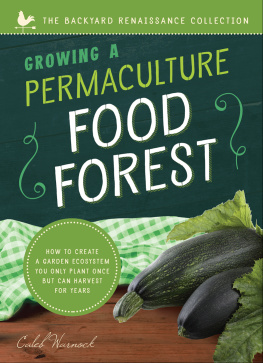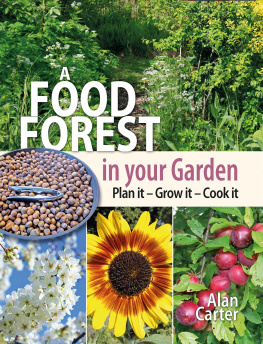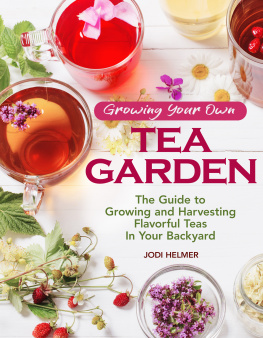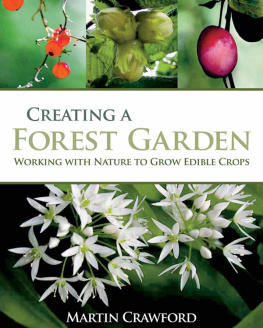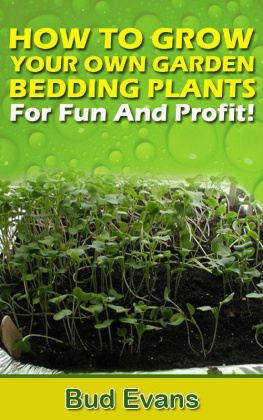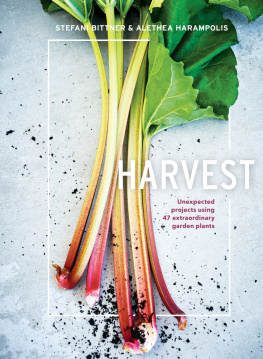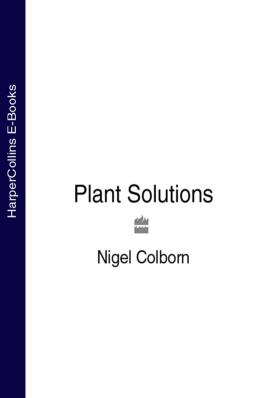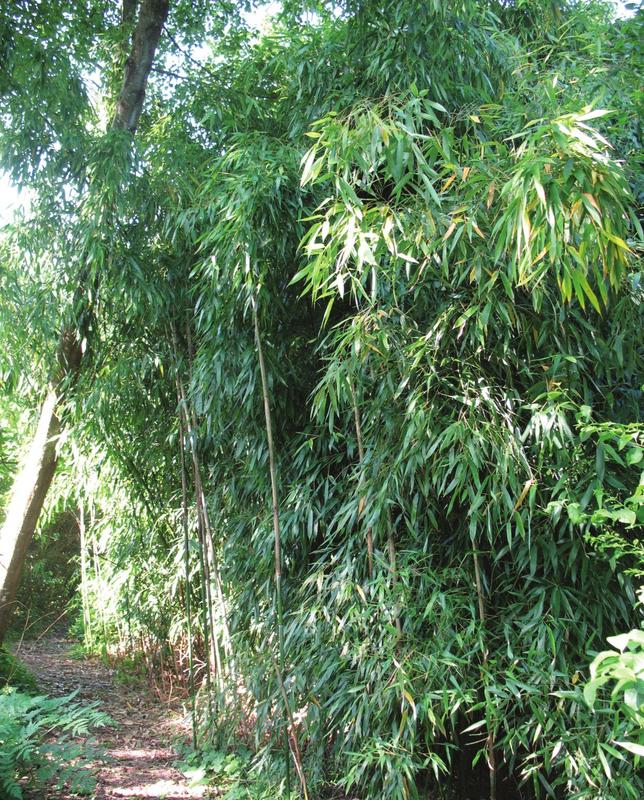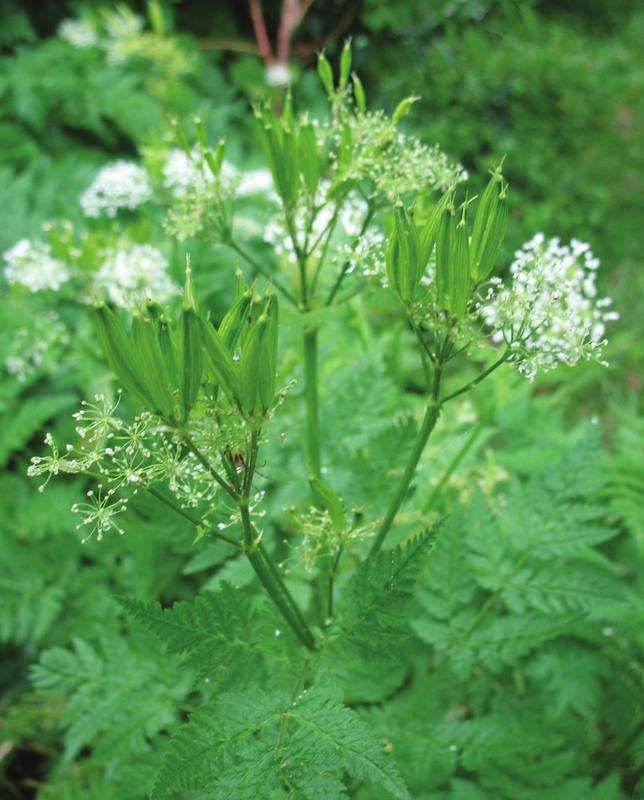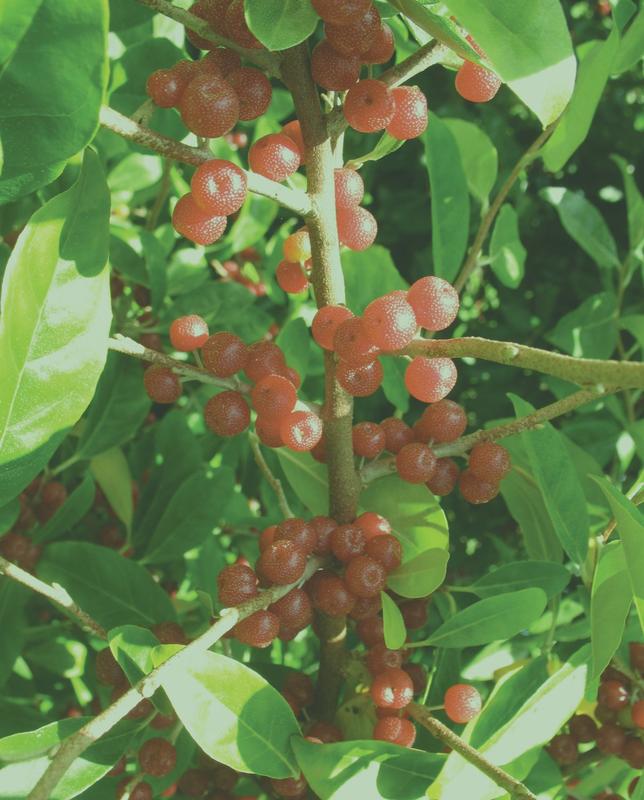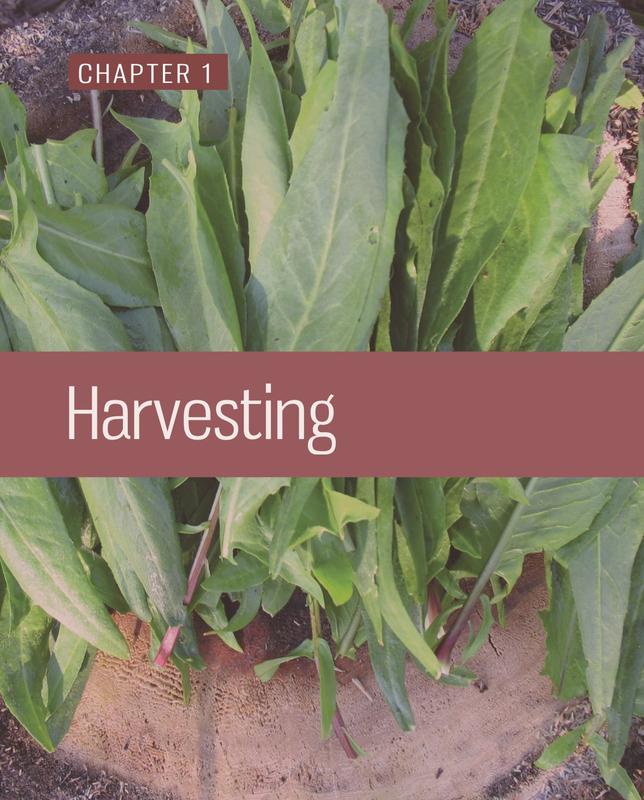Thank to all at Green Books, especially Amanda, Alethea, Bee, Jayne and John.
Most of all thanks to my family.
Thanks to Patrick Whitefield for guiding me on my permaculture path and being a great friend and mentor. Thanks to Dana Kapitulinov for her advice on the fascinating habits of microorganisms. Great thanks to Martin Crawford for being a pleasure to work with and a continuing inspiration to myself and many others. My continuing gratitude goes to my students, who always teach me as much as I teach them, and who sowed the seed of inspiration for this book. And my greatest appreciation to my husband, Doug, whose patience, support and encouragement made all of this possible.
This book is the result of a growing realisation for both of us that there is a notable gap in the forest garden library. For many years, we have both been asked by people on tours around the forest garden in Dartington, or by students on permaculture courses about how to prepare and cook unusual forest garden crops. It seems that many people may be deterred from embarking upon this new and exciting way to grow food because they are unsure about how to make use of the unfamiliar crops in the kitchen.
So, in these pages, Martins forest garden expertise has been combined with Carolines culinary skills (and experimentation) to create simple, delicious and practical recipes for everyday use. Many of the recipes will seem very familiar, just featuring forest garden perennials in place of staple annuals. If you decide to create a forest garden, or if you have done so already, then it is of course essential that the produce can be incorporated into daily cooking, and thereby the forest garden incorporated into your daily life.
This is how the garden and the gardener really thrive in symbiosis. This is a cookbook for gardeners, not a gardening book, so, apart from a brief introduction to the plant being used, and a picture of it, you wont find detailed plant information here; for this you should refer to Creating a Forest Garden. Not every single plant in that book has its own entry in this one, but all of them are included in Appendix 1, which gives general guidance on culinary usage.
The main recipe section, Part 2, is ordered by season, and contains recipes for cooking with fresh produce. Although located in the book according to their main season of harvest, many of the plants are available for longer: Appendix 2 indicates the range of months within which each plant in Part 2 can be used. Part 1 comprises chapters on harvesting methods, drying and traditional preserving, including fermentation. For each preservation technique we give a brief explanation of the general method and some sample recipes. There are numerous books devoted to traditional preserving techniques jams, chutneys, pickles, and so on. Fermenting is a less familiar technique for many people, but a wealth of information can be found in the books listed in the Resources section.
Drying is a fascinating way of preserving foods, especially fruits, and is also unfamiliar to many. In a damp climate, sun drying is not very viable, so extra heat has to be applied using a powered dehydrator, the results of which are superb. Information on the range of equipment available for food drying, along with the various other pieces of equipment described in Part 1, can be found in the Resources section.
A note on units: these are given in both metric and imperial, but note that the pint and fluid ounce values are UK units, which differ slightly from US units. 1 UK fl oz is in fact approximately equal to 1 US fl oz, while 1 UK pint is approximately equal to 1.2 US pints.
HARVESTING
AND
PRESERVING
Given the busy lives that many of us lead today, it is important to be able to harvest our food crops quickly and efficiently. There are some simple and easy tips to speed up harvesting, which are described here.
Spring ground shoots
Examples include: Solomons seal, ostrich fern, bamboo.
Ground shoots emerge in the spring, usually very fast. Once they start, you should check at least twice a week for the new tender shoots to harvest.
With most shoots, cutting cleanly with a knife at ground level is easiest and quickest. Small shoots like ostrich fern can be snapped off by hand. With some shoots, like bamboo shoots, a longer shoot can be obtained by digging down and cutting some centimetres below ground, although its not always clear that its worth the work involved.
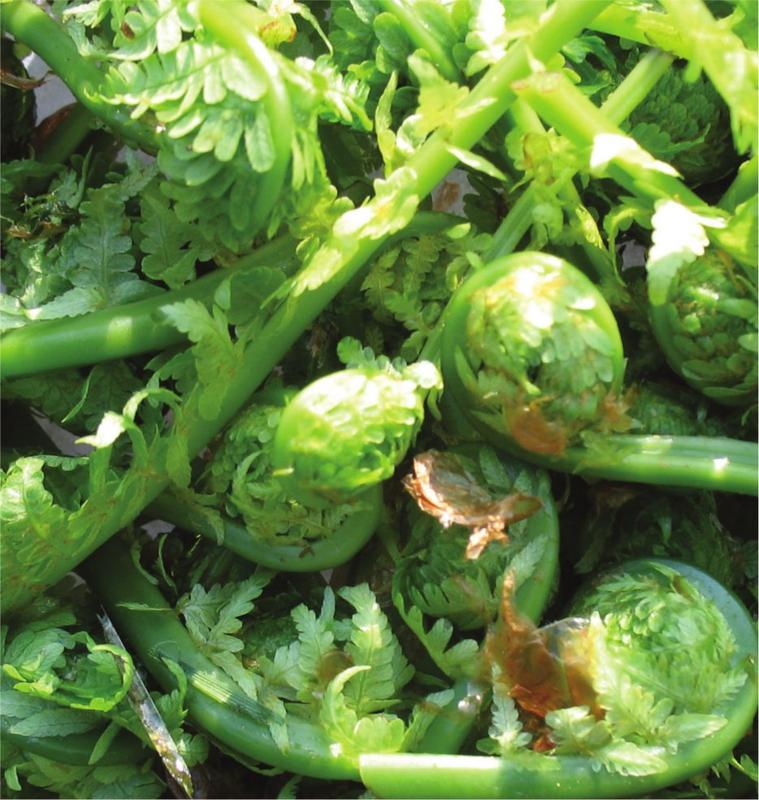
Ostrich fern shoots.
Leaves
Examples include: lime, chicory, mulberries.
There is a lot to be said for tearing leaves off plants when harvesting, rather than trying to pick them neatly by cutting or breaking the leaf stalk. It is much faster to tear them off, but it does not leave the plants looking neat and tidy! However, tearing is how most herbivores harvest leaves, and it is what most plants are adapted to by tearing you do not break into the leaf cells but tear along lines of cells. As a result, the leaves do not wilt or brown so quickly, and the remnant left on the tree is not so susceptible to fungal diseases entering the leaf or stalk. Hence it is better all round!
Of course, many chefs also recommend tearing leaves in salads rather than chopping them for the same reason as described above. However, if you are going to eat the salad quickly then it probably makes no real difference.
Fruits
Fruits from trees and shrubs are likely to be major crops in most peoples forest gardens, so knowing the most efficient way to harvest them is vital.
Large high fruits
Examples include: plums, pears, apples on larger trees.
There are two sensible options here. One is to use a telescopic fruit picker these have a harvesting head with a kind of crenulated edge and cloth bag to catch the fruit. Once you have got the hang of them they can be relatively fast and you can harvest several fruit at once. It is quickest if you harvest with a second person, so you can lower the picker and allow them to empty the bag.
The other option is not to harvest high fruits from the tree at all, but rather from the ground. For this to be practical you need to use the fruits immediately, as they will bruise within hours of harvesting. Making juice from them is one obvious possibility, and of course cider apples and perry pears are always harvested from the ground.
To harvest from the ground you need to make sure the ground cover beneath the tree (grass or whatever) is cut short before the fruit drops. When most of the fruit has dropped (often after a storm) you can shake or tap the branches to encourage any last fruits down before you harvest. You can just pick them up by hand, but its much easier to use an Apple Wizard hand harvester. You roll this over the ground, and the fruits ping inside the wire cage. When its full, you empty it into a bucket by twisting it on a special attachment fixed to the bucket. Its very quick and saves your back a lot of strain!

